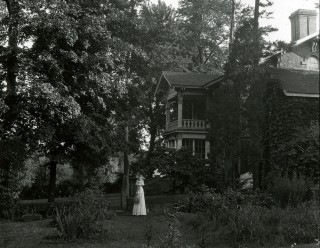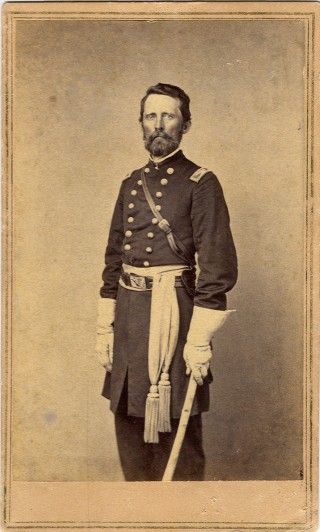[et_pb_section admin_label=”section”][et_pb_row admin_label=”row”][et_pb_column type=”4_4″][et_pb_text admin_label=”Text” background_layout=”light” text_orientation=”left” text_font_size=”14″ text_line_height=”1.4em” use_border_color=”off” border_color=”#ffffff” border_style=”solid”]
This 1930 photograph shows a familiar Fayetteville landmark – Judge Lafayette Gregg’s house sits at the corner of Gregg and Lafayette streets. The home was being used for a photo shoot for Miss Arkansas Traveler, Daphne Dailey.


If it could be said that the University of Arkansas had a founder, it might be Judge Gregg, and this Saturday, Feb. 6, marks the occasion of his 191st birthday.
After moving to Fayetteville in 1835 at age ten, Gregg went on to represent the area in the Arkansas State Assembly, then as prosecuting attorney in the Circuit Court. He served as a Colonel for the Union in the Civil War, sat on the Arkansas Supreme Court, and eventually became President of the Bank of Fayetteville, all while maintaining a law practice in town.
Gregg was also instrumental in Arkansas Industrial University (now the U of A) coming to Fayetteville. He worked with his friend William McIlroy to use the farmer’s hill for the school, and Gregg donated 120 acres of his own land to the cause. Gregg personally oversaw the construction of Old Main, brick by brick, as the story goes. His home, built in 1871 just on the edge of the new campus, is now on the National Register of Historic Places. Gregg then served on the Board of Trustees from 1874 to 1883. His son Alfred was one of the school’s first graduates in 1876.
The photographs of the Gregg House in Fayetteville are part of the papers of the founder of the University of Arkansas School of Journalism, Walter J. Lemke (MS L541) in the University Libraries’ Special Collections. Lemke’s papers contain a wealth of documentation related to the history of the University and of the state of Arkansas, in addition to hundreds of historic photographs.

To learn more about the Gregg family, pioneers of Northwest Arkansas, and the legacy of Lafayette Gregg, see the Gregg Family Papers (MC1000) also in Special Collections.
For more information about the thousands of resources preserving the history of Arkansas available through the University of Arkansas Libraries, contact Special Collections, specoll@uark.edu, or visit the department in Mullins Library.
[/et_pb_text][/et_pb_column][/et_pb_row][/et_pb_section]
